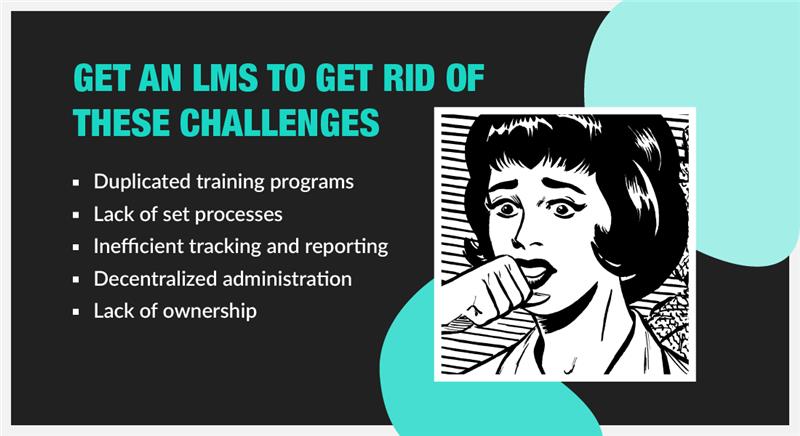The Future of L&D – Top Trends to Watch Out For in 2022

In the new normal, businesses face a slew of additional problems, one of them being managing a remote and hybrid workforce. No department, however, we feel, has suffered more than corporate learning and development (L&D).
Corporate training departments are an important part of organizational development, and L&D teams create programs to upskill personnel to fill the skills and knowledge gaps that exist in the market. L&D teams had to do things in a unique way during the pandemic, as lockdowns and other Covid restrictions emerged.
To develop a highly productive work environment, L&D teams needed to implement virtual training sessions, track employee efficiency and performance, and seek for novel, powerful tools. But, by the end of 2021, also known as the Year of Reconnection, everything had returned to normal, and business as usual had resumed.
In this post, we share trends and all that’s in store for L&D teams in 2022 and beyond. We want to help both in-house L&D teams and eLearning solutions providers take the driver’s seat and maximize their training outcomes.
What are the Most Popular L&D Trends in 2022?
Here are the top 7 L&D trends to look out for in 2022:
- Rapid Digital Learning
- Repurposed Content
- Microlearning
- Social Learning and Collaboration
- Adaptive Learning
- Mobile-first Knowledge Delivery
- Real-Time Employee Feedback;
What’s Different Post COVID?
L&D teams need to step up and change conventional training sessions into eLearning courses in response to the changes brought about by COVID-19 restrictions and remote, hybrid work patterns. As employees returned to their workplaces, and they have progressively lifted COVID limitations at the end of 2021, there is another movement toward in-person training. Learning and development teams need to reassess what corporate training means to their businesses and build effective training tactics for the hybrid workplace.
It isn’t only about surviving; it’s also about recognizing new employee behaviors, goals, well-being, and abilities. In the post-pandemic world, employees, L&D teams, and organizations have chosen to transition into the future of learning. Today, they’re entirely dedicated to investing in focused skill development to help their organizations achieve their goals.
Now that you’re up to speed on the significant shifts in L&D best practices, let’s look at 7 trends of L&D to keep an eye out for in 2022 and future.
Keep an eye out for these 7 Learning and Development (L&D) Trends in 2022
1. Rapid Digital Learning
As employees return to their places of work, one of the most promising developments of 2022 is the increasing transition towards online learning. According to a LinkedIn Workplace Report 2022 , organizations have raised their investment in L&D by over 60% to expedite their digital activities, which include upskilling staff to adopt modern technologies and processes.
Rapid eLearning is much more than just publishing a well-designed PowerPoint slide, which L&D teams develop using an authoring tool. Rapid eLearning allows you to construct a course in a few weeks while also sustaining high quality of training content. In terms of scale, speed, and quality, it meets every training need.
For rapid eLearning design, look into these 5 recommended practices for instructional designers.
2. Repurposed Content
L&D teams are developing and maintaining training material for their companies as eLearning solutions gain prevalence in the corporate world today. They’re converting text-based information into microlearning videos, audio snippets, interactive infographics, and PDFs by employing authoring tools like iSpring and Articulate Storyline 360. These innovative approaches do away with the need for time-consuming repurposing of training content, and they allow L&D teams to swiftly upgrade their training programs.
3. Microlearning
Microlearning is a flexible learning method that can be applied in a variety of ways to enhance individual and organizational performance. It breaks down information into bite-sized, digestible nuggets of information, and each microlearning module focuses on one learning goal. A microlearning course should take 5 to 10 minutes to complete.
Microlearning is the breaking down of training information into small, digestible chunks. Its goal is to improve the knowledge transmission and retention process. It also helps L&D teams to be more creative by including fun and varied visual elements, like movies and gamification. While improving training completion rates.
4. Social Learning and Collaboration
Human beings are social creatures. It’s critical for businesses to provide social learning experiences. Even though social learning has been generating headlines for years, it wasn’t until the onset of the pandemic that businesses realized its full potential as they faced disconnect through asynchronous learning.
Social learning is a successful technique that brings together employees with common goals in a virtual or physical environment for collective upskilling. To improve workplace training programs, L&D teams are leveraging the power of tools, like social media, live chat, video conferencing, and useful engagement tools, along with cloud services, like Microsoft 365 and Azure.
5. Adaptive Learning
Adaptive learning is a training strategy that employs artificial intelligence (AI) and machine learning to provide employees with personalized learning experiences tailored to fulfil their specific requirements. According to recent predictions, personalized experiences are in high demand in 2022. This data-driven, AI-assisted approach to training helps L&D teams ensure their learners are advancing the future of learning.
6. Mobile-First Knowledge Delivery
Approximately 84% of the world’s population uses a smartphone in 2022. Our lifestyles have become increasingly dependent on mobile devices. We also use smartphones for a lot more than only making phone calls and sending text messages. Developers have designed the modern mobile device with innovative technology that keeps them on par with the most powerful laptops and PCs.
Learners appropriate their mobile phones to complete everyday tasks at work, play video games and stay up to date on social media. And it only makes sense to broaden their application, especially in remote workspaces, to include learning and development initiatives.
Mobile learning was not as successful as traditional learning techniques because of smaller displays, badly designed software, and optimizing concerns. However, as mobile technologies advance, industry experts predict that mobile-first L&D programs will grow exponentially.
Applications like Learn Worlds, Growth Engineering Learning, and Kahoot, are amazing at satisfying the needs of modern learners as they provide employees with even more control over their training.
7. Real-Time Employee Feedback
The growth of enhanced feedback loops between trainers and workers is another trend that L&D teams are witnessing in 2022. Employees who are undergoing training can have the most pertinent “to-dos” and “don’t-dos” to enhance their courses.
Modern eLearning systems, popular digital communication, and social media sites use surveys, debates, and quizzes, among other avenues to promote real-time employee contribution to organizational achievement.
Parting Thoughts!
So, there you have it. These are the seven most important learning and development trends to prepare for in 2022 and beyond. L&D teams are now at the intersection of fast-paced technological changes in these uncertain times. They work hard to upskill and reskill employees, and they’re implementing emerging technologies and procedures to match the pace of recent changes in the market.
Do you want to take your company’s training program to the next level and take advantage of what’s already working? And do you long to improve the effect of L&D strategies to help your company succeed? Then join LearnFlux! It’s a three-day virtual learning event centered on learning and sharing. If you’re an L&D professional or an eLearning Champion, then this is the place to be. Now is the time to reserve your place!





